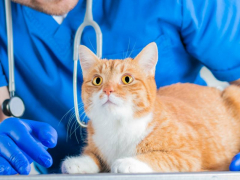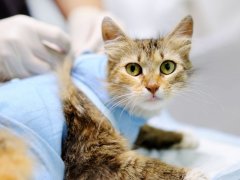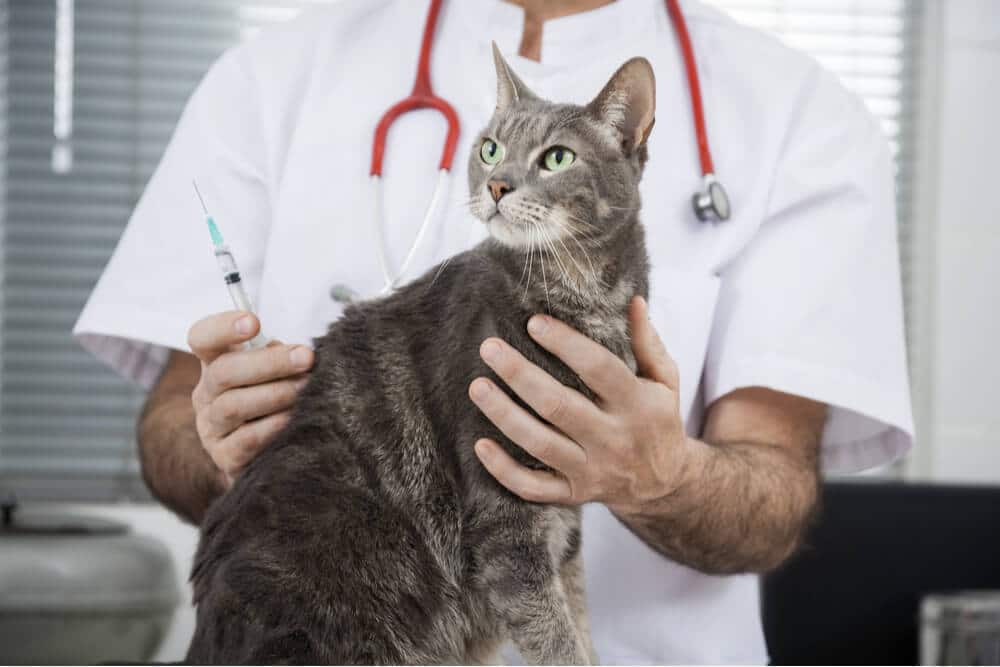
Wondering which vaccines your cat needs and how often they should be vaccinated? We’ve broken down cat vaccine schedules so that you can keep your cat protected.
In the United States, the American Association of Feline Practitioners oversees a Feline Vaccination Advisory Panel, which periodically reviews the vaccination guidelines and research, and offers vaccine recommendations for all cats.
The AAFP Feline Vaccination Advisory Panel last revised its vaccination guidelines for cats in 2013.
The schedules listed in this article are based on the AAFP Feline Vaccination Advisory Panel guidelines unless otherwise noted.
Vaccines are categorized as “core” (recommended for all cats and kittens, including indoor cats) and “non-core” (recommended for some cats based on lifestyle and health status).
Your veterinarian can tell you which non-core vaccines are recommended for your cat or kitten based on your cat’s lifestyle, age, and health status, which can help your vet determine your cat’s risk of exposure.
Vaccination schedules vary according to the cat’s age. Kitten vaccination schedules generally involve more vaccines than adult vaccination schedules (for those cats that were not vaccinated as kittens). Booster recommendations vary based on the vaccine and the individual cat’s risk of exposure.
Core Vaccines List
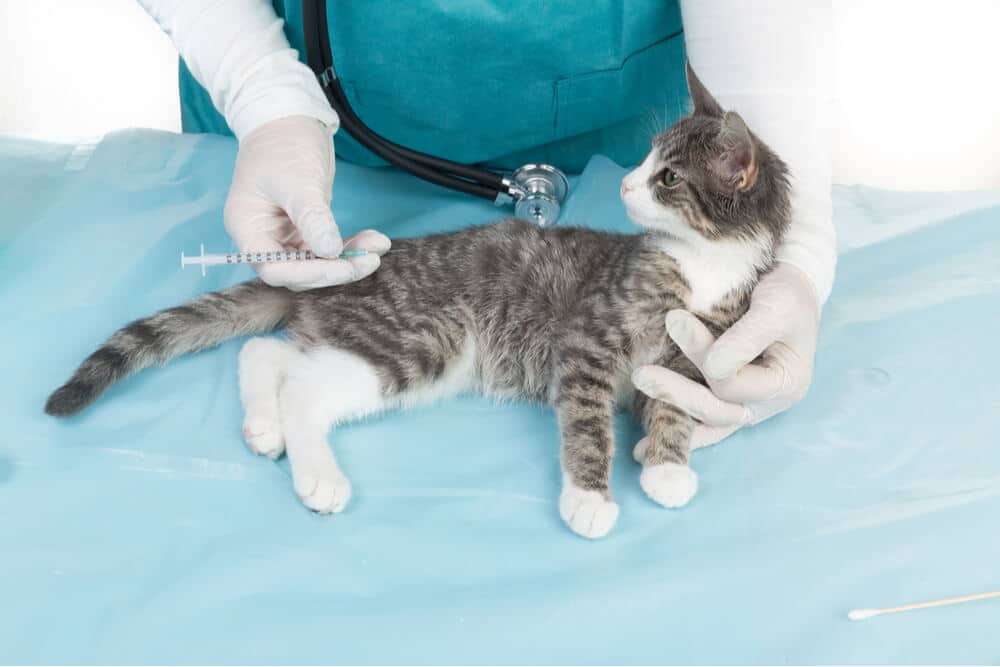
Vaccinations are grouped into two main groups—core and non-core vaccinations. Core vaccinations are considered essential for all cats, whether they live indoors or outside.
Core vaccines for cats include feline panleukopenia (feline distemper or FPV), feline herpesvirus (feline viral rhinotracheitis), feline calicivirus (FCV) and rabies virus.
For cats, a combination vaccine (abbreviated FVRCP) covers rhinotracheitis, calicivirus, and panleukopenia. Your cat will only receive one shot but will be vaccinated against all three viruses.
Feline Panleukopenia Virus (FPV; Feline Distemper)
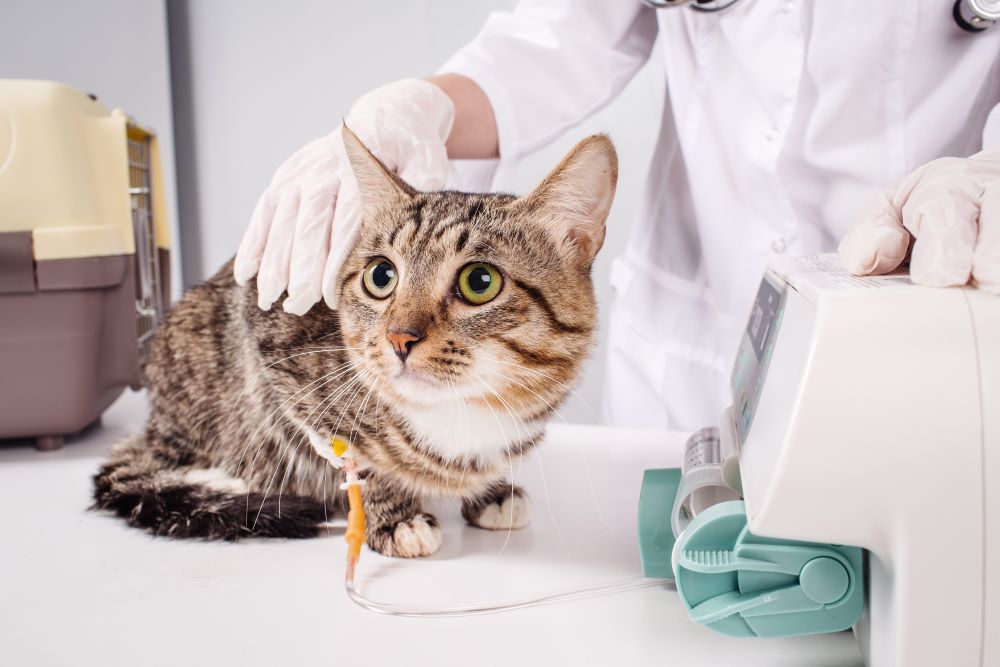
Fluid therapy is a cornerstone of feline panleukopenia treatment.
Feline panleukopenia virus is a type of feline parvovirus that attacks a cat’s intestinal lining, bone marrow, and lymph nodes. Often fatal, it is extremely contagious, especially to kittens.
| Initial kitten vaccination: Starting at 6 to 8 weeks of age, the feline panleukopenia vaccine is given once every three-four weeks, until the kitten is 16 to 20 weeks old. |
| Initial adult cat vaccination: Unvaccinated adult cats should receive two doses, spaced three to four weeks apart. |
| Booster recommendation: Cat should be revaccinated one year after the initial vaccination; subsequently, cats should receive a booster shot every three years. |
Feline Herpesvirus (FHV-1; Feline Viral Rhinotracheitis)
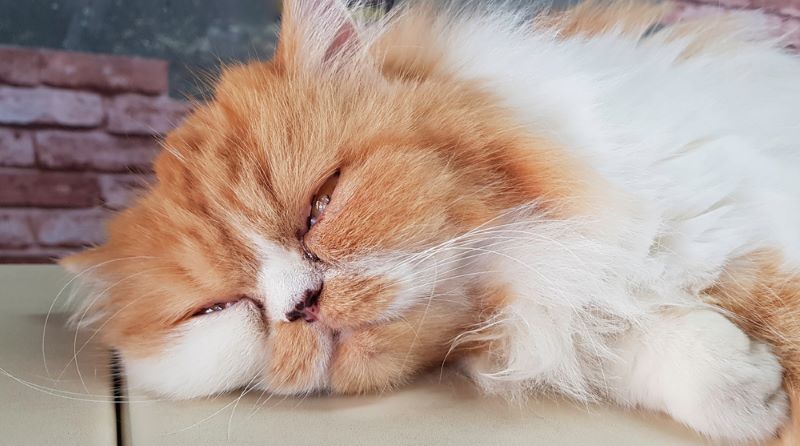
Conjunctivitis in cats has a wide range of causes, including infections, trauma, and more.
Feline herpesvirus causes upper respiratory infections and eye infections. It is extremely contagious between cats, and once infected, cats can be asymptomatic carriers for their lifetime.
| Initial kitten vaccination: Starting at 6 to 8 weeks of age, the feline herpesvirus vaccine is given once every three-four weeks, until the kitten is 16 to 20 weeks old. |
| Initial adult cat vaccination: Unvaccinated adult cats should receive two doses, spaced three to four weeks apart. |
| Booster recommendation: The cat should be revaccinated one year after the initial vaccination; subsequently, cats should receive a booster shot every three years. |
Feline Calicivirus (FCV)
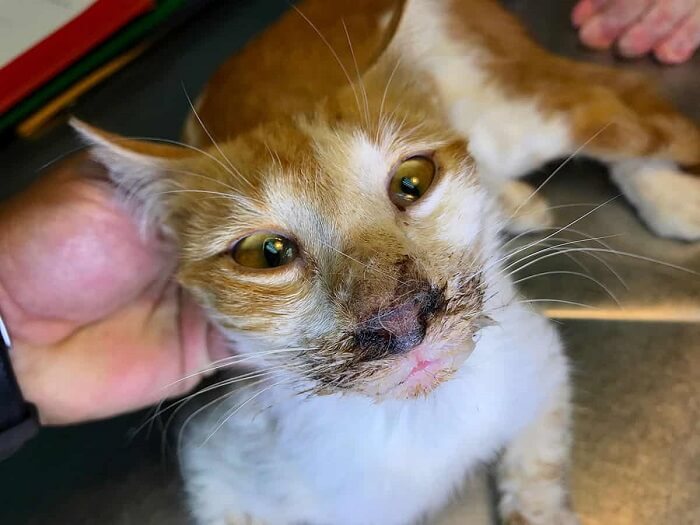
Feline calicivirus causes respiratory infections and oral disease. It is extremely contagious between cats.
| Initial kitten vaccination: Starting at 6 to 8 weeks of age, the feline calicivirus vaccine is given once every three-four weeks, until the kitten is 16 to 20 weeks old. |
| Initial adult cat vaccination: Unvaccinated adult cats should receive two doses, spaced three to four weeks apart. |
| Booster recommendation: Cat should be revaccinated one year after the initial vaccination; subsequently, cats should receive a booster shot every three years. |
Rabies Virus

Rabies is a virus that infects mammals, including cats, dogs, wildlife, and humans. Because rabies is a serious zoonotic disease (transmissible from animals to humans), most states have laws that require all cats to receive rabies vaccines and boosters throughout their lives.
|
Initial kitten vaccination: A single dose of the rabies vaccine is given when the kitten is 12 weeks or older. |
|
Initial adult cat vaccination: A single dose of the rabies vaccine. |
|
Booster recommendation: Cat should be revaccinated one year after the initial vaccination; subsequently, cats should receive a booster shot every one or three years, depending on the rabies vaccine used. The rabies vaccine has a different recommended frequency depending on the vaccine manufacturer (some rabies vaccines are good for just one year and others are good for three years). |
Non-Core Vaccines List
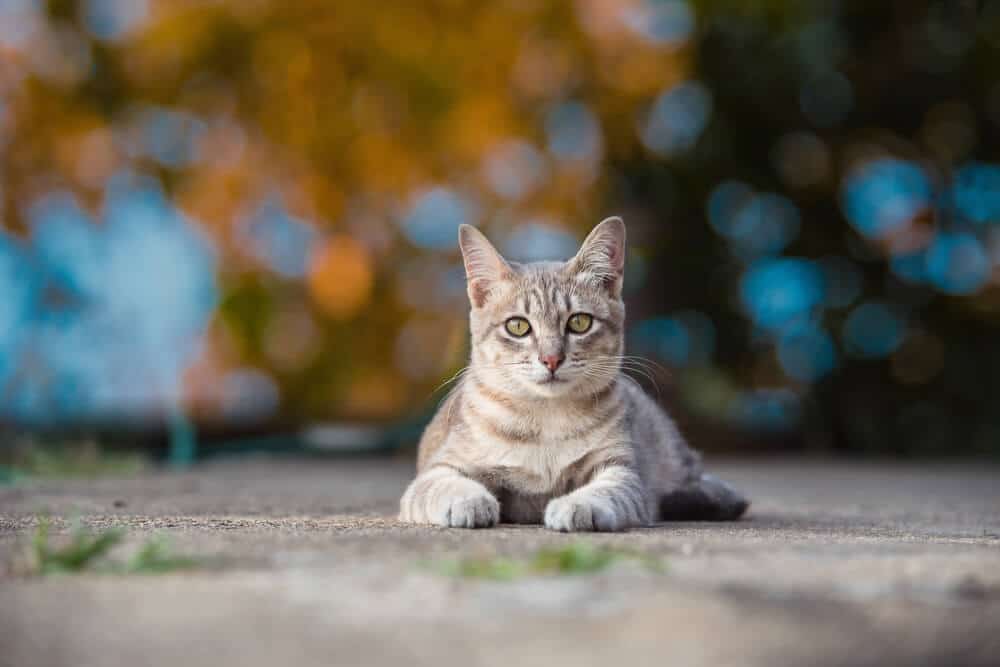
In addition to core vaccinations, some at-risk cats may also need non-core vaccinations.
Non-core vaccines for cats include feline leukemia virus (FeLV), feline immunodeficiency virus (FIV), Bordetella bronchiseptica (kennel cough), and feline infectious peritonitis (FIP).
Feline Leukemia Virus (FeLV)
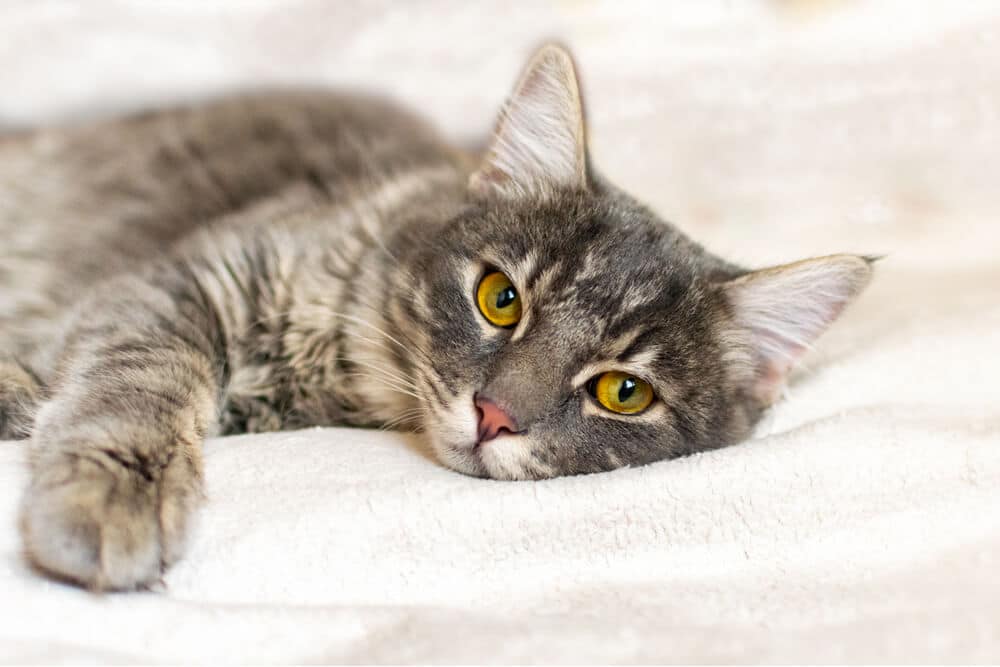
Cats with feline leukemia are immunocompromised, which may lead to a range of secondary health issues.
Feline leukemia virus is not leukemia, nor is it cancer. It is a virus. However, because the virus suppresses a cat’s immune system, it can cause a cat to develop cancer as well as other infections and illnesses.
| Initial kitten vaccination: Starting at 8 weeks of age, two doses of feline leukemia virus vaccine are given, spaced out every three-four weeks. |
| Initial adult cat vaccination: Unvaccinated adult cats should receive two doses, spaced three to four weeks apart. |
| Booster recommendation: Cat should be revaccinated one year after the initial vaccination series; subsequently, cats should receive a booster shot every one or two years, depending on whether the cat is at high or low risk of infection (the veterinarian can assess each cat’s level of risk). |
Feline Immunodeficiency Virus (FIV)
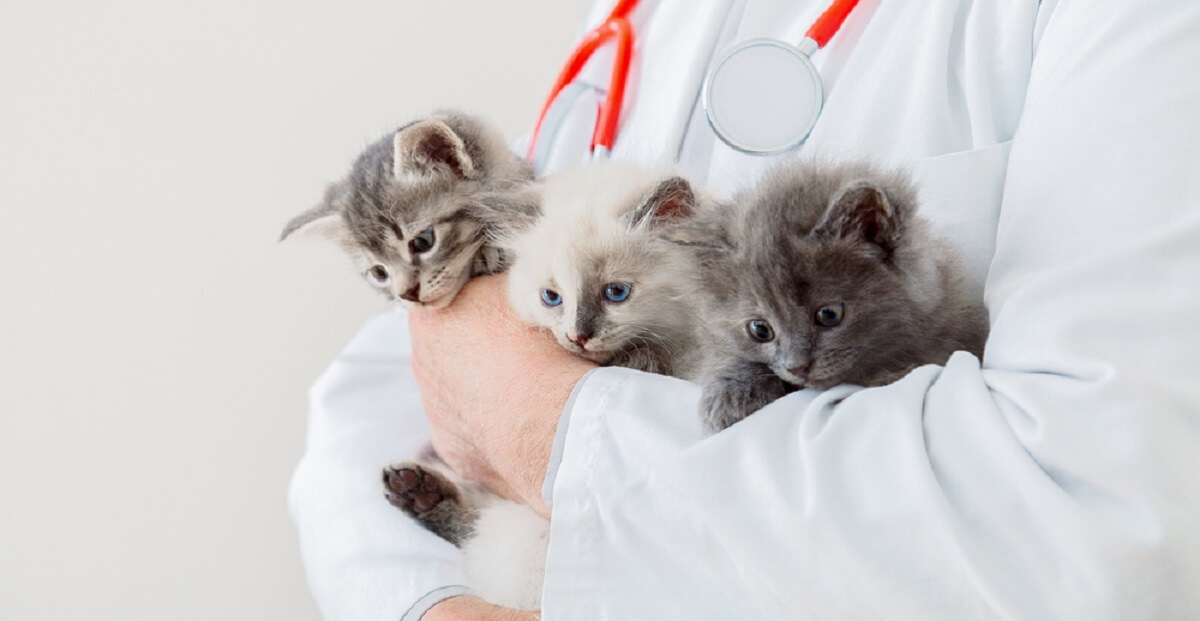
Feline immunodeficiency virus causes a cat’s immune system to become weakened, which makes the cat more susceptible to catching other infections.
Although a vaccine for FIV was once available, its effectiveness was questionable and the vaccine is no longer produced nor distributed in North America. Vaccination against FIV is no longer recommended.
| Initial kitten vaccination: Not recommended. |
| Initial adult cat vaccination: Not recommended. |
| Booster recommendation: Not recommended. |
Bordetella Bronchiseptica (Kennel Cough)
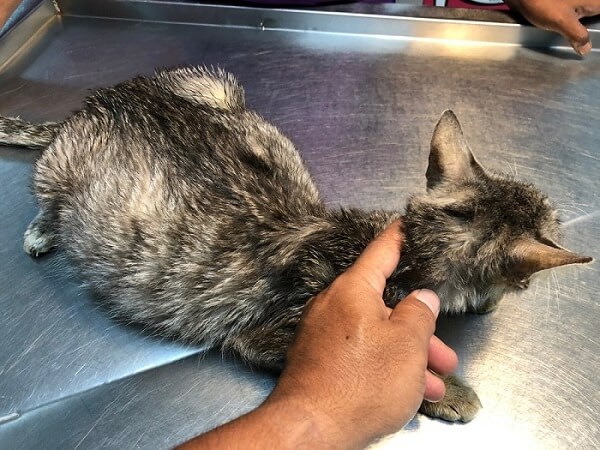
Bordetella bronchiseptica can cause severe lower respiratory tract disease, usually in kittens. According to the University of California Davis School of Veterinary Medicine, Bordetella infection is rare in cats, so this vaccine is not recommended for household pets, although it may be used in certain high-risk multi-cat environments.
| Initial kitten vaccination: Not recommended. |
| Initial adult cat vaccination: Not recommended. |
| Booster recommendation: Not recommended. |
Feline Infectious Peritonitis (FIP)
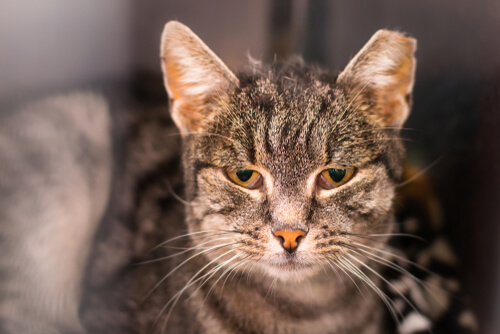
Feline infectious peritonitis is caused by certain strains of the feline coronavirus.
Most cats infected with feline enteric coronavirus (FeCV) show few symptoms of the disease, but about 10% of infected cats go on to develop serious, usually fatal symptoms. Although a vaccine for FIP is available, its effectiveness is questionable. The AAFP does not recommend vaccinating for FIP.
| Initial kitten vaccination: Not recommended. |
| Initial adult cat vaccination: Not recommended. |
| Booster recommendation: Not recommended. |
Understanding Cat Vaccination Schedules Can Be Confusing At Times.
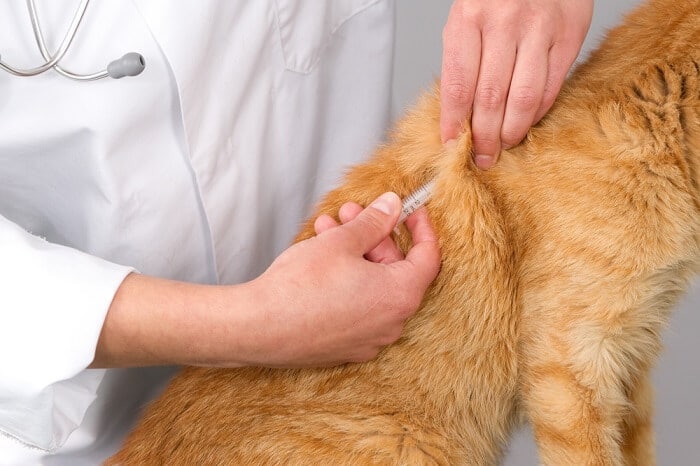
It’s always best to work with your veterinarian to determine which vaccines your cat needs, and how often you should vaccinate your cat.
Cat Vaccinations and Schedule Summarized
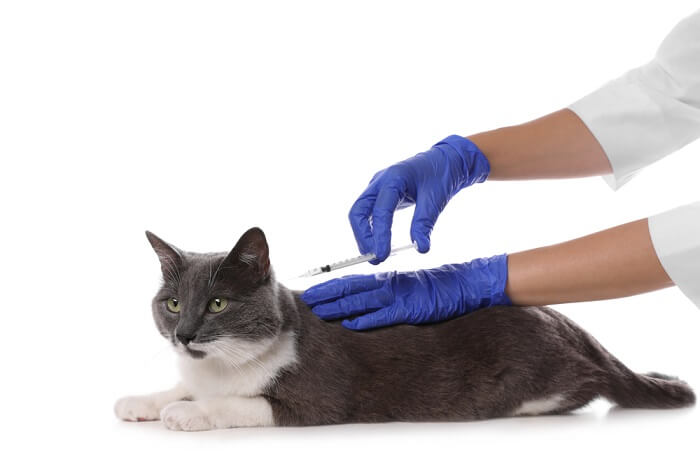
| Vaccination Type | Initial Kitten Vaccination | Initial Adult Vaccination | Booster Recommendation | Core/Non Core |
| Feline Panleukopenia Virus (FPV; Feline Distemper) | Starting at 6 to 8 weeks of age, the feline panleukopenia vaccine is given once every three-four weeks, until the kitten is 16 to 20 weeks old. | Unvaccinated adult cats should receive two doses, spaced three to four weeks apart. | Cat should be revaccinated one year after the initial vaccination; subsequently, cats should receive a booster shot every three years. | Core |
| Feline Herpesvirus (FHV-1; Feline Viral Rhinotracheitis) | Starting at 6 to 8 weeks of age, the feline herpesvirus vaccine is given once every three-four weeks, until the kitten is 16 to 20 weeks old. | Unvaccinated adult cats should receive two doses, spaced three to four weeks apart. | The cat should be revaccinated one year after the initial vaccination; subsequently, cats should receive a booster shot every three years. | Core |
| Feline Calicivirus (FCV) | Starting at 6 to 8 weeks of age, the feline calicivirus vaccine is given once every three-four weeks, until the kitten is 16 to 20 weeks old. | Unvaccinated adult cats should receive two doses, spaced three to four weeks apart. | Cat should be revaccinated one year after the initial vaccination; subsequently, cats should receive a booster shot every three years. | Core |
| Rabies Virus | A single dose of the rabies vaccine is given when the kitten is 12 weeks or older. | A single dose of the rabies vaccine. | Cat should be revaccinated one year after the initial vaccination; subsequently, cats should receive a booster shot every one or three years, depending on the rabies vaccine used. | Core |
| Feline Leukemia Virus (FeLV) | Starting at 8 weeks of age, two doses of feline leukemia virus vaccine are given, spaced out every three-four weeks. | Unvaccinated adult cats should receive two doses, spaced three to four weeks apart. | Cat should be revaccinated one year after the initial vaccination series; subsequently, cats should receive a booster shot every one or two years. | Non-Core |
| Feline Immunodeficiency Virus (FIV) | Not recommended. | Not recommended. | Not recommended. | Non-Core |
| Bordetella Bronchiseptica (Kennel Cough) | Not recommended. | Not recommended. | Not recommended. | Non-Core |
| Feline Infectious Peritonitis (FIP) | Not recommended. | Not recommended. | Not recommended. | Non-Core |

